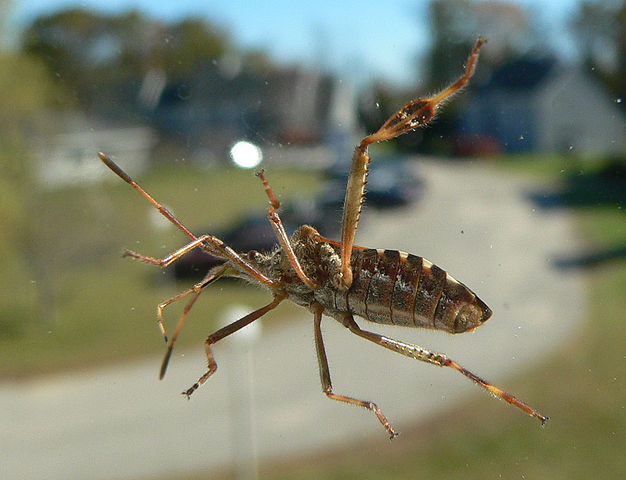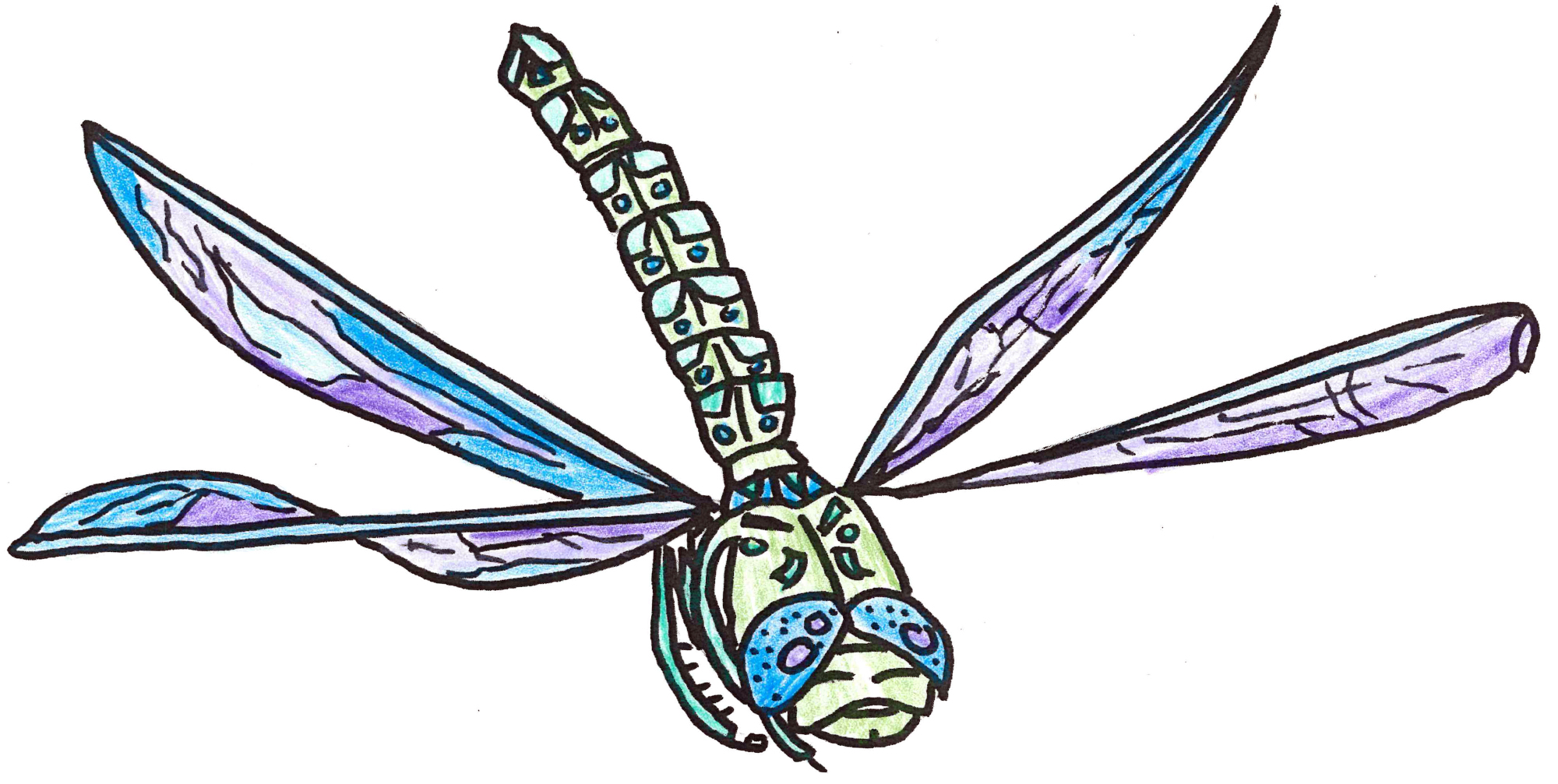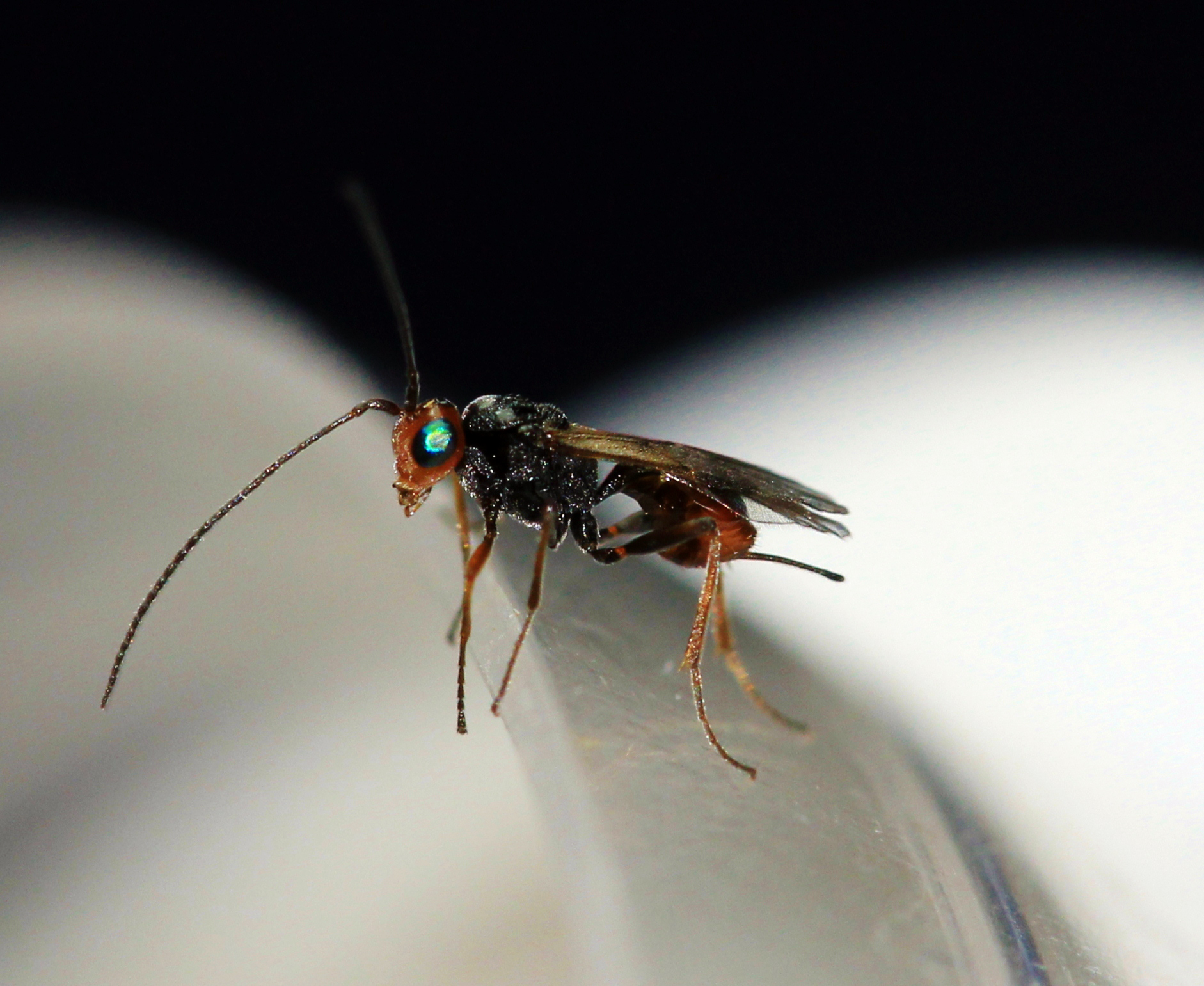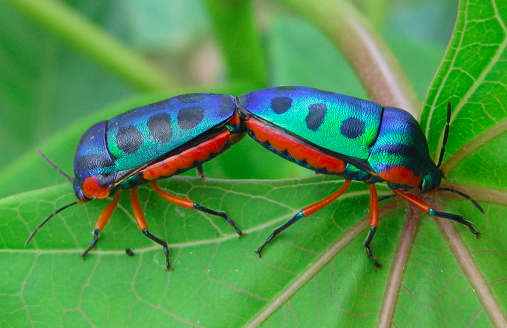This time of year in the Northern US, most true bugs are hard to find. They are doing their best to conserve energy, hiding out in relatively cozy, dry spots, such as under bark, waiting for warmer weather to return. One bug however keeps active longer than most, and they may find their way into houses. This potential house guest is a leaf-footed bug, called the western conifer seed bug, Leptoglossus occidentalis.

Leaf-footed bugs are members of the family Coreidae, which is large group of true bugs. Most species of leaf-footed bugs live in the tropics. Some species are beautiful and have extremely leafy-looking feet. Some coreids in the US are pests of squash plants, and some people may know them as “squash bugs.”
Although coreids like Leptoglossus look similar to assassin bugs, like the wheel bug, they feed on the sap of pine trees and other conifers. If you disturb them they may try to bite you, but human skin is too tough for these bugs. The worst they can do is release a smelly defensive odor.
This time of year Leptoglossus like to seek out a warm place to spend the winter. All too often this means they try to wriggle themselves into peoples’ houses and apartments. The bugs are harmless to people, but of course its not pleasant sharing your house with these alien-looking inch-long insects. Moreover, the bugs are likely to starve if you actually did give them a place to live in doors. The most humane solution to this unwanted houseguest is to release him outdoors where hopefully he will find more natural place to spend a dormant winter.
And remember, it could always be worse! Many people in the mid-Atlantic will be dealing with large numbers of brown stink bugs, that also try to over winter indoors. And it can get worse… In 1993, the manager of a chemical plant in British Columbia reported an infestation of thousands of Leptoglossus, which clustered around heating exhaust vents (Blatt 1994 Journal of the Entomological Society of British Columbia). It was suggested that the air coming out of the ducts contained some chemical that was similar to the aggregation pheromone these bugs use to find each other for mating.

As it’s common name implies, it is originally from western North America, where it feeds on the seeds and new shoots of ponderosa pine and Douglas fir. Leptoglossus have become common across the US, expanding eastward and feeding on a wide range of pine and confer species. This has made them a serious pest for tree farms! Amazingly, Leptoglossus occidentals has even invaded Europe, spreading to become a serious pest on that continent.





Just id’d a LEPTOGLOSSUS hanging out on sunny window at work in Oshawa, ON. Weather has turned cooler than seasonal over past few days, just after a weird late September heat wave LEPTOGLOSSUS Oshawa is outside now 🙂
I think the Western Conifer Seed bug is the bugs we have been seeing since 2016 I have seen 3 this year. I live in Parkville, Pa
Cool! If you have a picture, you can submit the sighting to our citizen science project (https://bugsinourbackyard.org/field-survey/open-ended-survey/) or to a more general project like, iNaturalist.org.